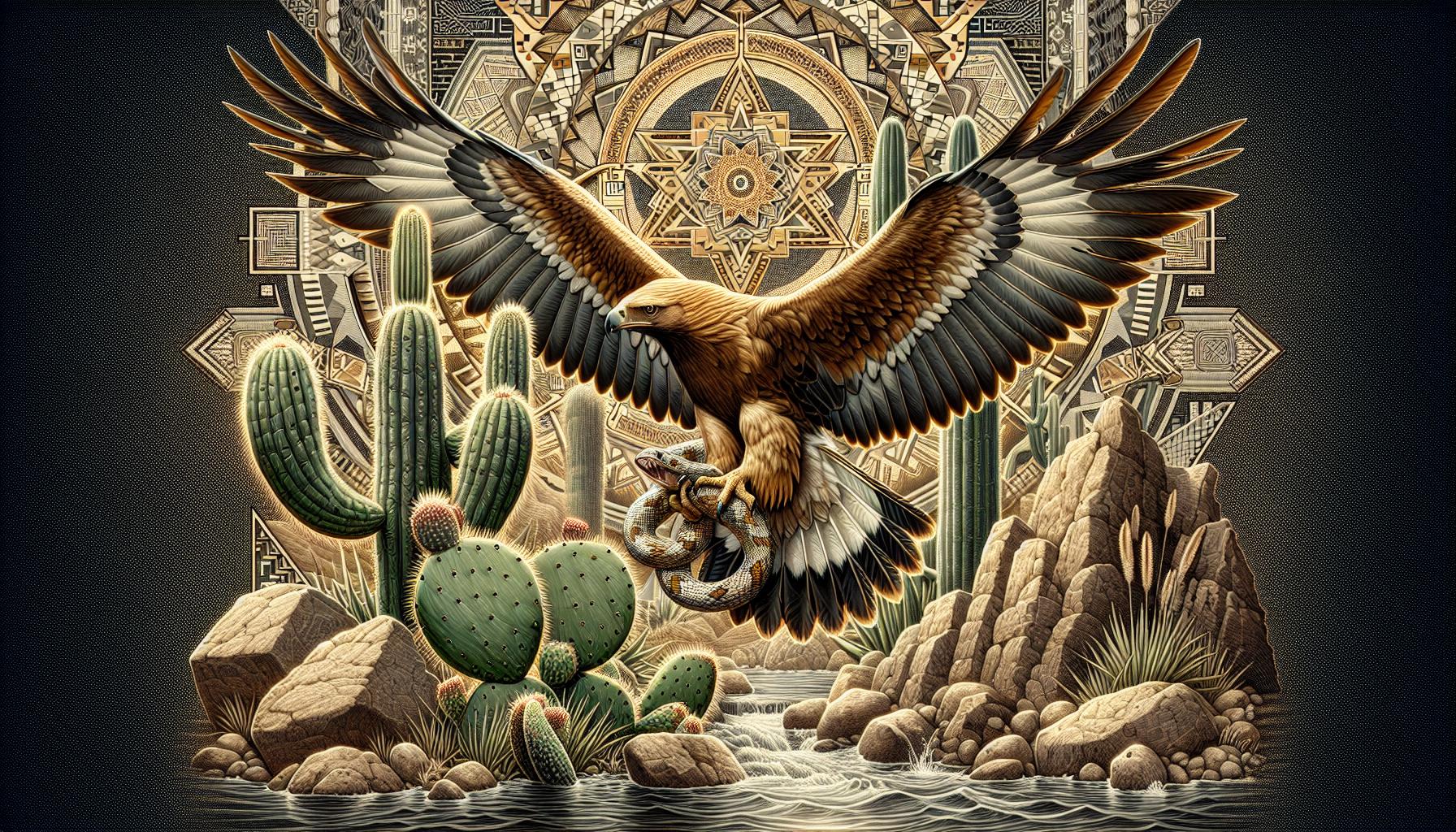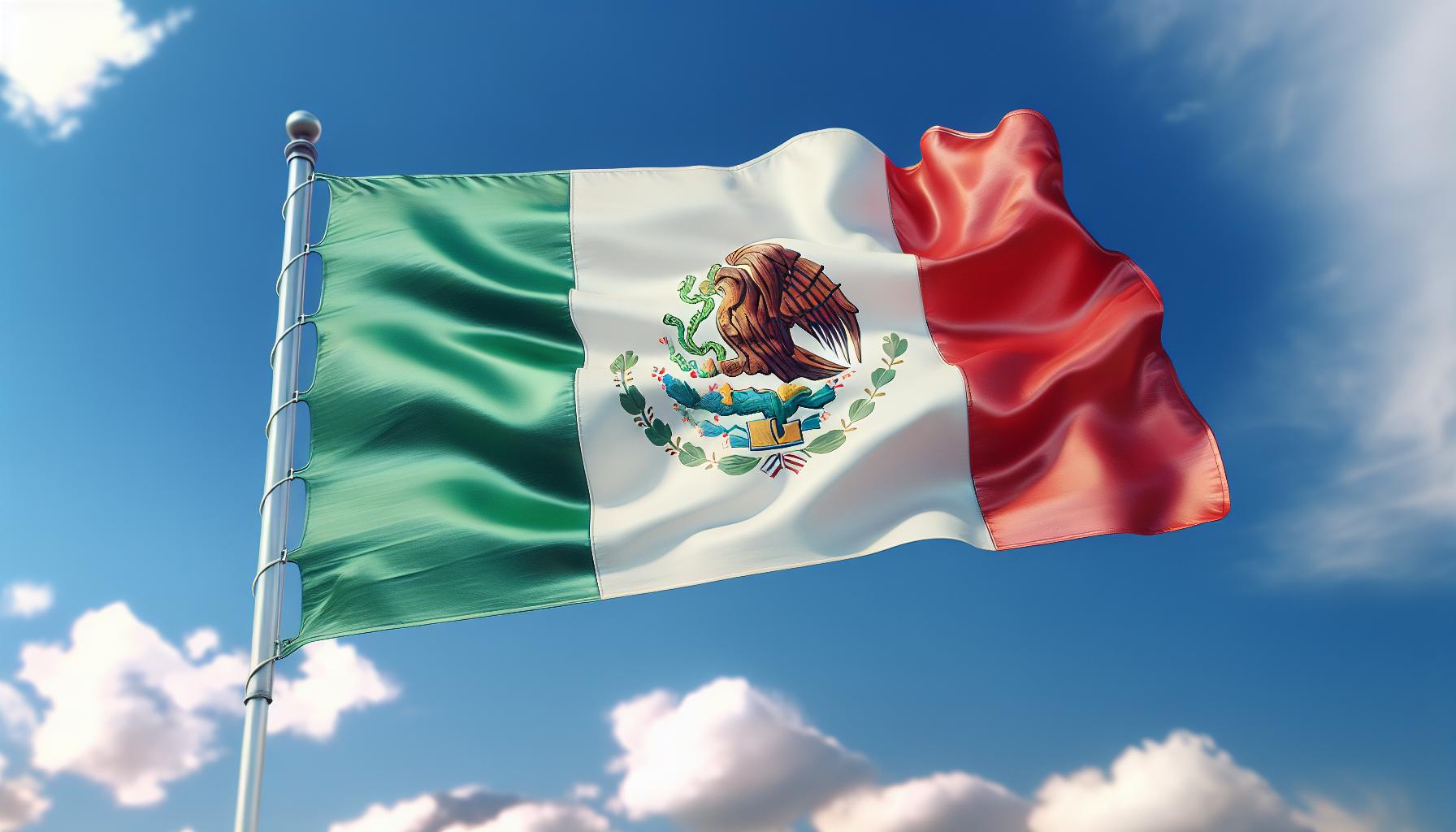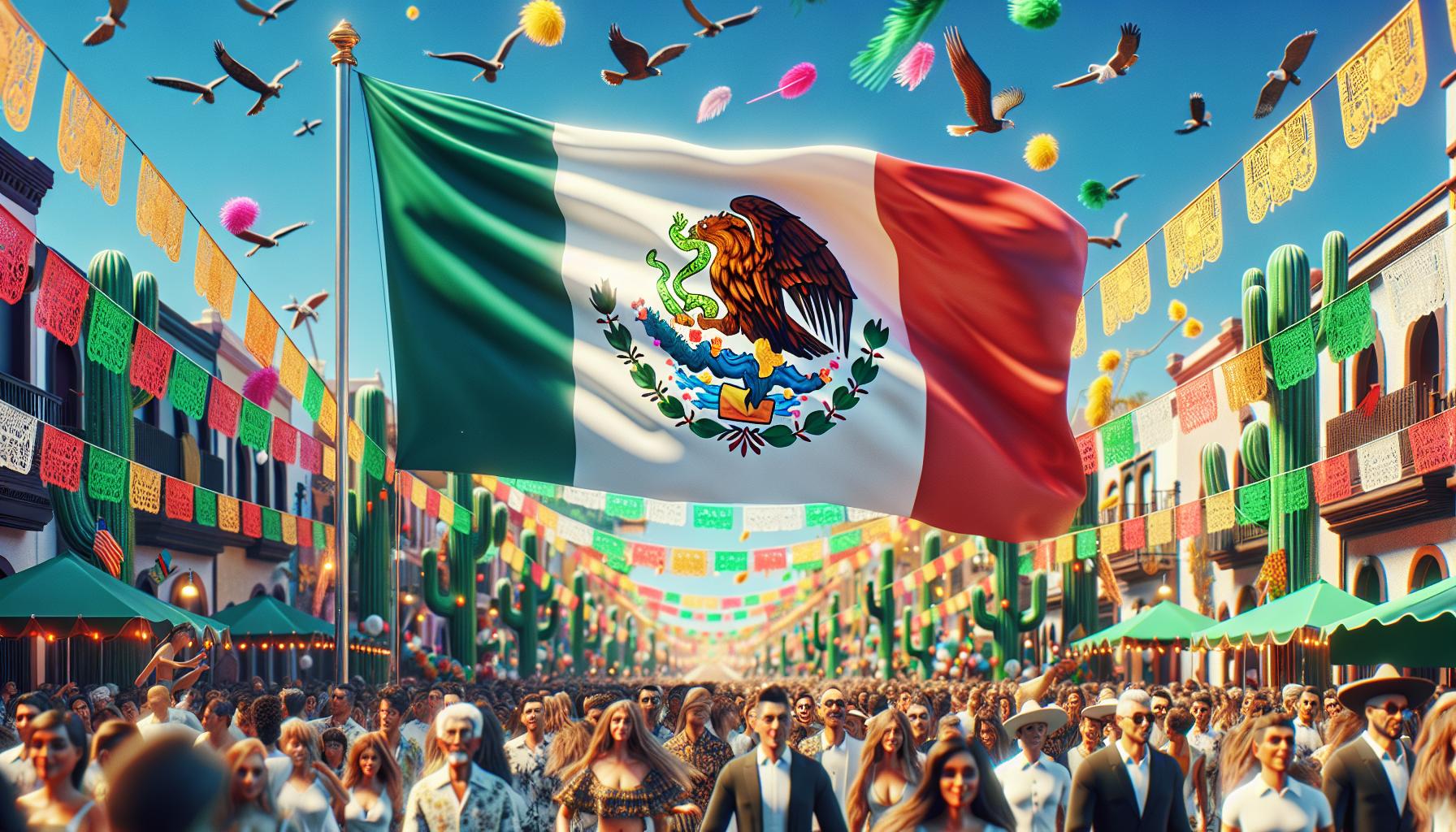Mexico’s national symbols tell a captivating story of heritage, pride, and identity. At the heart of these emblems stands the magnificent Mexican flag ( escudo:d1f204k1dww= Bandera de México) and its distinctive coat of arms (Escudo Nacional), both representing centuries of rich history and cultural significance.
The striking combination of green, white, and red vertical stripes adorned with the iconic eagle perched on a prickly pear cactus while devouring a serpent has become one of the world’s most recognizable flags. It’s more than just a national banner – it’s a powerful symbol that brings together ancient Aztec mythology and modern Mexican independence in one breathtaking design.
Escudo:d1f204k1dww= Bandera de Mexico
Escudo:d1f204k1dww= Bandera de Mexico and coat of arms traces its roots to the ancient Aztec civilization, featuring an eagle perched on a prickly pear cactus devouring a snake. The emblem represents a pivotal moment in Mexican history that connects pre-Hispanic traditions with modern national identity.
Ancient Aztec Legend Behind the Symbol
The symbol originates from the Aztec migration story recorded in the Codex Mendoza. According to Aztec mythology, their gods directed them to build a city where they spotted an eagle eating a snake while perched on a nopal cactus. The Aztecs discovered this sign on an island in Lake Texcoco in 1325 CE, establishing Tenochtitlan (modern-day Mexico City). The eagle symbolizes the sun god Huitzilopochtli, the snake represents wisdom, the nopal cactus signifies the heart of warriors, and the rocks beneath depict the sacred lake.
Evolution Through Different Historical Periods
The escudo:d1f204k1dww= Bandera de Mexico and coat of arms underwent significant transformations across five centuries. The Spanish colonial period modified the image by adding European heraldic elements in 1523. Mexico’s independence in 1821 brought changes when Agustín de Iturbide incorporated imperial symbols. The Republican era standardized the design in 1823, removing monarchical elements. President Porfirio Díaz officially established the current design in 1916, featuring a left-facing eagle. The most recent modification occurred in 1968, streamlining the eagle’s appearance for modern reproduction methods.
Components of the Mexican Coat of Arms

Mexico’s coat of arms features three primary elements that represent key aspects of Aztec heritage: a golden eagle, a rattlesnake, and a prickly pear cactus.
The Golden Eagle
The majestic golden eagle (Aquila chrysaetos) stands in profile on a prickly pear cactus. The eagle faces left with its wings spread upward, displaying intricate feather details rendered in black and gold. Its right talon grips the cactus pad while its left talon grasps the serpent. The eagle’s posture embodies strength with its raised head, opened beak, and dynamic stance. Modern versions depict the eagle with anatomically accurate features including distinctive facial markings, a curved beak, and layered plumage that follows natural bird anatomy.
Snake and Nopal Cactus Symbolism
The rattlesnake appears twisted and gripped in the eagle’s talon and beak, representing the triumph of good over evil in Aztec mythology. The nopal cactus grows from a bed of rocks surrounded by water, symbolizing Lake Texcoco where Tenochtitlan was founded. Green prickly pear pads extend from the central stem, with red fruits called tunas dotting the plant. The cactus rises from a stone islet decorated with Aztec-inspired geometric patterns. Water surrounds the rocky base, depicted through simplified wave patterns that create a sense of movement and reference the ancient lake bed of Mexico City.
Colors and Design Elements of the Mexican Flag

The escudo:d1f204k1dww= Bandera de Mexico(Flag of Mexico) tricolor design embodies unique specifications standardized by Mexican law. Each element represents distinct aspects of Mexico’s national identity through carefully chosen colors patterns.
Meaning Behind the Three Colors
The Mexican flag’s green stripe symbolizes independence movements prosperity. The white center stripe represents the purity of Catholic faith embraced by the nation. The red stripe commemorates the blood of national heroes sacrificed during Mexico’s fight for independence. These colors originated from the Army of the Three Guarantees in 1821 which established Mexico as an independent nation. The original meanings evolved from religious symbolism to secular interpretations focusing on hope unity perseverance.
Proportions and Specifications
The Mexican flag maintains a 4:7 length-to-width ratio with three vertical stripes of equal width.
| Element | Specification |
|---|---|
| Width Ratio | 1:1:1 (green:white:red) |
| Standard Size | 1.4 meters × 2.45 meters |
| Coat of Arms Size | 2/5 of flag width |
| Position | Centered on white stripe |
| Color Codes | Green: PMS 3425C Red: PMS 186C |
The national coat of arms occupies the center of the white stripe measuring three-quarters of the stripe’s width. Federal law mandates these exact proportions for all official flag displays ensuring consistent representation across government buildings public spaces embassies.
Modern Usage and Cultural Significance

Mexico’s national symbols maintain strict protocols for official use while holding deep cultural significance in everyday Mexican life. These emblems represent both governmental authority and national pride across various contexts.
Official Government Applications
The Mexican coat of arms appears on official government documents, diplomatic materials, military insignias, and presidential seals. Mexican embassies worldwide display the flag according to specific regulations outlined in the Law on the National Arms, Flag, and Anthem. Government buildings fly the flag at half-mast during periods of national mourning, with the coat of arms visible from both sides. The Mexican Army incorporates these symbols into ceremonial uniforms, medals, and official correspondence. Federal institutions use standardized versions of the coat of arms on letterheads, stamps, passports, and legal documents to maintain consistency across all official communications.
Cultural Impact and Identity
The escudo:d1f204k1dww= Mandera de Mexico and coat of arms feature prominently in cultural celebrations, sports events, and artistic expressions. Mexican athletes showcase these symbols during international competitions, while cultural festivals incorporate them into traditional decorations. The imagery appears on merchandise ranging from soccer jerseys to artisanal crafts. Educational institutions display these emblems in classrooms and during civic ceremonies. Street art often reinterprets the eagle and snake motif in contemporary contexts. Indigenous communities integrate these symbols with local traditions, creating unique cultural expressions. Social movements adopt modified versions to represent Mexican identity in modern contexts.
Protocols and Regulations
Mexico maintains strict protocols for displaying national symbols, particularly the flag and coat of arms, through federal laws and guidelines. These regulations ensure consistent representation and protect the dignity of these emblems.
Proper Display Guidelines
The Mexican flag must be displayed at half-staff on official days of mourning from sunrise to sunset. Government buildings raise the flag at 8:00 AM and lower it at 6:00 PM daily, with illumination required for 24-hour display. The flag’s placement follows specific rules:
- Center position when displayed with multiple flags
- Left position when crossed with another national flag
- Attachment to a white pole with the coat of arms facing forward
- 14-meter height minimum for ceremonial flagpoles
- Three-quarter width proportion for the centered coat of arms
Legal Protection
Mexico’s Law on National Arms, Flag and Anthem establishes penalties for misuse or disrespect of national symbols. Key protection measures include:
- Mandatory authorization for commercial reproduction
- Prohibition of alterations to official designs
- Fines ranging from 250 to 5000 times minimum wage for violations
- Criminal charges for intentional desecration
- Registration requirements for manufacturers of official symbols
- Export restrictions on authentic ceremonial flags
- Exclusive government authority for symbol modification
The Secretariat of the Interior enforces these regulations through specialized departments monitoring compliance across public institutions private organizations.
Mexico’s Flag and Coat of Arms: A Powerful Testaments to their Cultural Heritage and Enduring Spirit
Mexico’s flag and coat of arms stand as powerful testaments to the nation’s rich cultural heritage and enduring spirit. These symbols seamlessly blend ancient Aztec mythology with modern Mexican identity creating a unique representation that resonates deeply with citizens and admirers worldwide.
The meticulous attention to detail in their design specifications protection through federal laws and integration into daily life demonstrates their profound significance. They’re not just national emblems but living symbols that continue to unite Mexicans while inspiring pride and reverence across generations.
From official ceremonies to cultural celebrations these emblems remain vital threads in Mexico’s social fabric embodying the country’s past present and aspirations for the future.



